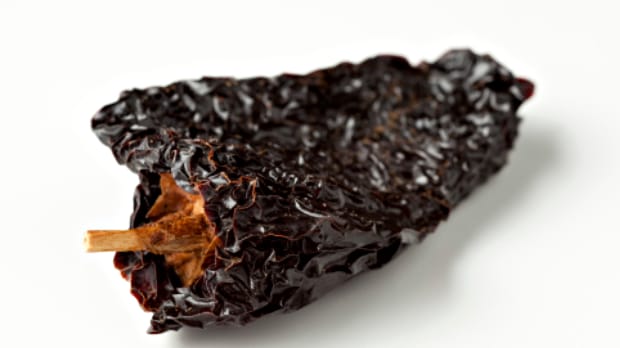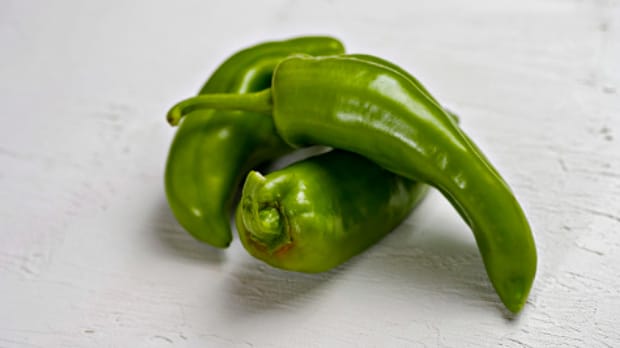What is Arugula?
Arugula, pronounced [ah-ROO-guh-lah], is a type of salad green that has various names which include rocket, rulola, Italian cress, and roquette. This delicate leafy green veggie is related to mustard and belongs to the Brassicaceae family. The leaves are tender and nutty, and they have a subtle peppery taste when they’re young. The radish-like leaves are visually appealing and will make your dish look appetizing. Other than being used as a base for your salad, it can also be used as an edible garnish, or included as an ingredient in sandwiches for a satisfying taste experience. Don’t be quick to toss the white blossoms aside, you can also eat them too! With arugula, you can add a refreshing twist to your dishes and elevate it to whole new level.
Nutritional Benefits
If you’re looking to incorporate more greens into your diet, consider adding arugula to your grocery list! This peppery and flavorful leafy green is not only delicious, but it also provides a plethora of nutritional benefits. Firstly, this leafy green vegetable is an excellent source of vitamin K, with just one cup providing over 100% of your daily recommended intake. Vitamin K is critical for healthy bones and blood clotting, making it an essential nutrient to include.

Additionally, this salad green is rich in antioxidants such as vitamin C and beta-carotene, which can help protect your body from harmful free radicals and reduce your risk of chronic diseases like cancer and heart disease. Not to mention, it is also low in calories and high in fiber, making it a great option for weight management and digestive health. So, whether you’re looking to boost your vitamin intake, prevent chronic disease or improve your digestion, arugula is definitely a green to add to your plate!
Types Available
If you enjoy healthy eating, then you might have heard about arugula, which is a leafy green vegetable. It is also known as rocket, rucola, or salad rocket. It has a slightly peppery taste and is commonly used as an ingredient in fresh salads, sandwiches, or sautéed as a side dish. There are different types of arugula available, and it can be challenging to know which one to choose. Here are the three most common types of arugula: wild, cultivated, and baby.

As the name suggests, wild arugula is grown in the wild and has a more intense flavor than the other types. It has a large leaf and a deep green color and is best suited for salads. Cultivated arugula is grown specifically for consumption and is milder in flavor than the wild variety. It has a smaller leaf and is more tender, making it perfect for sandwiches or other dishes that require a delicate flavor. Baby arugula is similar to cultivated but is harvested at an earlier stage, giving it a delicate texture and mild flavor. It is ideal for mixing with other greens and using as a base for a salad.
So, there you have it, folks! The different types of arugula available are wild, cultivated, and baby arugula. Depending on your preferences and the recipe you’re making, you can choose the type that’s best for you. Happy cooking!
What are the Best Uses?
Are you tired of always sticking to the same old spinach or lettuce? Why not give arugula a try? It is a leafy green vegetable that packs a punch of nutrients and flavor. But what are the best uses for this produce? First off, it is great in salads. It has a peppery and slightly bitter taste that pairs well with sweeter vegetables like tomatoes or bell peppers. Try mixing it in with some feta cheese and toasted nuts for a delicious and filling salad.
But arugula doesn’t just have to be eaten raw. It can also be sautéed or wilted down in a hot pan with some garlic and olive oil. This makes for a tasty addition to pasta dishes or even as a pizza topping. It is also a great addition to sandwiches. Swap out your usual lettuce for some arugula to add some depth and flavor. It pairs well with turkey, chicken, or even vegetarian options like avocado or hummus. Lastly, this tasty green can also be made into a tasty pesto. Blend it with some pine nuts, parmesan cheese, garlic, and olive oil for a flavorful spread that can be used on sandwiches, as a dip or even as a pasta sauce.
Overall, arugula is a versatile and healthy vegetable that can be used in a variety of dishes. So next time you’re at the grocery store, add it to your cart and experiment with different ways to use it. Your taste buds and body will thank you.
How do You Store Arugula?
Are you wondering how to store arugula? Well, worry not, as I am here to guide you on this topic. When it comes to storing arugula, it is essential to keep it fresh for longer use. Firstly, you must remove the greens from their original packaging, or if it’s fresh from the garden, wash it thoroughly. You should then wrap it in a dry kitchen towel or paper towel to remove excess moisture. Once you have these delicate greens are wrapped up, you can store them in a plastic bag with a few holes punched in it. The holes allow for proper airflow, keeping the arugula fresh and dry.
It’s always best to place the plastic bag inside a container or a drawer in your fridge. This configuration protects the leaves from any moisture and odors that may be present. Ensure that your refrigerator temperature stays between 32°F to 40°F to preserve the salad greens. It can hold for up to seven days.
Remember not to wash the arugula until you’re ready to eat it, as excess moisture will cause the leaves to wilt and turn slimy. In case you have fresh arugula from the garden, you can keep it fresh by putting a damp towel on top of the leaves while in a container.
How to Prepare Arugula
Are you ready to add a new leafy green to your diet that is both flavorful and healthy? This peppery plant adds a delicious kick to salads, sandwiches, and even pizza. But before you take a bite, let’s talk about how to prepare this leafy green correctly. Start by washing the arugula leaves thoroughly under cool running water. Then, grab a salad spinner or a clean towel to dry them off. Once they’re dry, place the leaves on a cutting board and chop off the stems. The stems can be tough and bitter, so it’s best to discard them.
Now that your arugula is prepped, it’s time to get creative! It pairs well with a variety of ingredients, such as fruit, nuts, and cheese. You can even use it as a substitute for basil in traditional pesto recipes. And don’t forget about its health benefits – arugula is packed with vitamin K, vitamin C, and antioxidants. So next time you’re at the grocery store, grab a bunch of arugula and give it a try. Your taste buds – and your body – will thank you!
When is Arugula in Season?
Hey there, are you a fan of arugula? Well, the good news is that this leafy green is available all year round, but the best season for it is actually in the cooler months of fall and spring. During these seasons, the flavor is at its best, and it’s a great addition to any dish. It’s perfect for salads, sandwiches, and even used as a pizza topping. Since, these greens are also rich in vitamins and minerals like calcium, potassium, and vitamin A, it’s great for your health and can add some serious flavor to your meals. So go ahead, make the most of this fantastic green and enjoy it during its peak season. Your taste buds (and your body) will thank you!
Improve Your Health With Seasonal Eating
What to Serve Arugula With?
- Grilled Chicken
- Roasted Potatoes
- Fresh Mozzarella
- Sun-dried Tomatoes
- Lemon Juice
- Avocado
- Walnuts
- Parmesan Cheese
- Olive Oil
- Balsamic Vinegar
What Traditional Cuisines Use Arugula?
Arugula is used in a variety of traditional cuisines, including Italian, Middle Eastern, and North African. This delicate green is often added to pizzas or tossed with pasta in Italian dishes. In the Middle East, it is a common ingredient in tabbouleh salad. For North African cuisine, it is often added to couscous or served as a side dish.
Tasty Recipes
- Arugula Salad with Lemon, Olive Oil, and Parmigiano-Reggiano
- Apple Bacon Arugula Salad
- Sweet Potato and Arugula Salad
- Roasted Asparagus and Arugula Salad with Shallot Vinaigrette
- Arugula Caprese Salad
Key Takeaways
- Arugula is a nutrient-dense leafy green that is packed with vitamins and minerals.
- Wash and dry the leaves before cooking or eating.
- Arugula has a peppery, slightly bitter flavor that can be used in salads, sandwiches, and pasta dishes.
- It can be cooked quickly over high heat to bring out its flavor.
- To reduce the bitterness of arugula, add a small amount of sugar or honey to the dish.
- The peppery greens pair well with acidic ingredients such as lemon juice, balsamic vinegar, and tomatoes.
- Store arugula in the refrigerator for up to seven days.
References: The Health Benefits of Arugula | Nutritional and Health Benefits of Arugula | Arugula: Nutritional Benefits and Potential as a Functional Food | Arugula (Eruca sativa L.): A Review of Its Nutritional and Pharmacological Profile | Nutritional and Health Benefits of Eruca sativa (A




